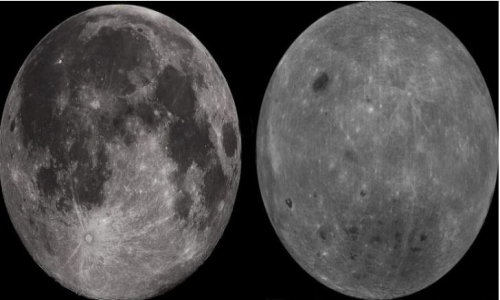


 6:49:38
6:49:38  2019-07-18
2019-07-18  1218
1218

Iron is a mineral that is vital for human survival. It is an essential component of hemoglobin, a protein that transports oxygen in red blood cells.
A shortage of iron can lead to dizziness, tiredness, and even anemia.
The Centers for Disease Control and Prevention (CDC) recommend adult males get 8 milligrams (mg) per day, and women up to the age of 50 years who are not pregnant or breastfeeding consume 18 mg of iron per day. Amounts vary from person to person.
There are many ways to meet daily iron requirements, boost iron levels, and still eat a varied, tasty, and nutritious diet.
This article looks at the 10 best sources of iron in the diet.
Breakfast cereals are often a leading source of iron, but it is essential to choose the right types.
The key is to look for a fortified cereal that contains 100 percent of the daily value of iron.
Heading straight for the colorful, sugar-heavy cereals is not the best way to boost dietary iron.
A one-cup serving of fortified cereal contains 18 mg of iron.
Next time you go to your favorite seafood restaurant, consider ordering some oysters.
A 3-ounce (oz) serving of cooked oysters contains 7.82 mg of iron.
Raw oysters contain a wide variety of nutrients, but cooked oysters are safer to eat.
White beans have the richest iron content of any bean. In fact, a one-cup serving contains 5.08 mg.
Canned white beans are also an excellent source of iron for people who do not have the time to sort and soak raw beans, packing a punch with 7.83 mg. Keep an eye on the sodium content, as manufacturers often add it to canned goods as a preservative.
Enjoy white beans by themselves in a salad, or add them to stews, soups, and pasta dishes.
Dark chocolate lovers have another reason to tuck into their favorite treat.
Just 3 oz of dark chocolate contains about 6.82 mg of iron.
Choose dark chocolate with at least 45 percent cacao solids.
While people often overlook organ meats, they are a great source of vital nutrients, including iron.
The exact amount depends on which type of organ it is, as well as its source.
Beef liver, for example, has 4.15 mg of iron per a regular 3-oz serving.
In the same serving, pork liver sausage has 5.44 mg, and chicken liver contains 7.62 mg of iron.
Soybeans are an ideal protein source in vegetarian diets. But these nutrient-dense legumes have a range of other benefits, including dense iron content, which is valuable to everyone.
A half-cup serving contains 4.54 mg of iron.
Try replacing meat with soybeans in main dishes, or add dried versions to salads to add a nutritious crunch to the texture.
These types of pulses are similar to beans and contain comparable amounts of iron.
A half-cup serving contains 6.25 mg of iron.
Lentils cook more quickly than beans, so they are perfect when seeking a quick fix of iron to meet the daily requirement.
Spinach has a reputation for its high vitamin A content, but it is also a valuable source of iron.
A half-cup of boiled, drained spinach contains 3.21 mg of iron, as well as a range of other essential nutrients.
Another staple of the vegetarian diet is tofu, which often comes fried.
Tofu contains 4.14 mg of iron in a 3-oz serving.
Sourcing iron from plant-based foods is particularly important in the vegetarian diet, as iron is most abundant in animal products. That need not mean vegetarians and vegans become iron-deficient.
Eating enough foods, such as tofu and soybeans, can ensure that a vegetarian diet provides more than enough iron to meet daily requirements.
Scaly fish are excellent sources of protein and omega-3 fatty acids. While shellfish have the edge on iron content, sardines can also pack a powerful iron punch.
3 oz of sardines provides 2.48 mg of iron.
Eat sardines on their own as a fishy snack or as part of a more substantial meal.
Determine your iron needs
It is a good idea to know where to find the best sources of iron. This information will help people obtain enough of this essential nutrient.
Ask a doctor or dietitian for specific iron recommendations if you:
It is also important to realize that iron requirements vary by age, sex, and health status. This is especially true for people with iron deficiency or who are prone to anemia.
Reality Of Islam |
|

The process

Astronomers

Cosmologist

Scientists
 9:3:43
9:3:43
 2018-11-05
2018-11-05
10 benefits of Marriage in Islam
 7:5:22
7:5:22
 2019-04-08
2019-04-08
benefits of reciting surat yunus, hud &
 9:45:7
9:45:7
 2018-12-24
2018-12-24
advantages & disadvantages of divorce
 11:35:12
11:35:12
 2018-06-10
2018-06-10
 6:0:51
6:0:51
 2018-10-16
2018-10-16
 9:30:2
9:30:2
 2021-11-12
2021-11-12
 1:38:41
1:38:41
 2021-12-08
2021-12-08
 10:47:11
10:47:11
 2022-11-22
2022-11-22
al-hussain (peace be upon him)
 10:18:1
10:18:1
 2022-09-21
2022-09-21
 2:13:43
2:13:43
 2022-05-27
2022-05-27
 8:19:41
8:19:41
 2018-06-21
2018-06-21
 4:2:19
4:2:19
 2022-10-10
2022-10-10
 5:41:46
5:41:46
 2023-03-18
2023-03-18
| LATEST |